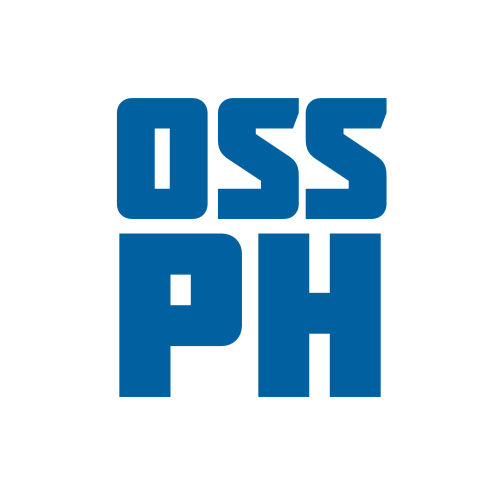Open source vs. proprietary software: Compare and contrast the advantages and disadvantages of using open source and proprietary software for various use cases
When it comes to software, there are two types of software - open source and proprietary. Both have their advantages and disadvantages, and choosing between the two can be challenging.

In today's digital age, software is an essential component of almost every aspect of our lives. From our smartphones to our computers, from our cars to our home appliances, software plays a crucial role in the functioning of our daily lives. When it comes to software, there are two types of software - open source and proprietary. Both have their advantages and disadvantages, and choosing between the two can be challenging. In this blog post, we'll compare and contrast the advantages and disadvantages of using open source and proprietary software for various use cases.
Open Source Software 📖
Open source software is software whose source code is freely available for anyone to view, modify, and distribute. This means that users have the right to modify and customize the software according to their needs. The open source movement has gained a lot of momentum in recent years, with many developers and companies embracing it. Some of the advantages of using open source software are:
Advantages of Open Source Software 👍
- Cost-effective: One of the most significant advantages of open source software is that it is often free. This means that businesses and individuals can save a lot of money on licensing fees and other expenses.
- Customizable: Open source software is highly customizable, which means that users can modify it to suit their needs. This makes it ideal for businesses and organizations that need specialized software that meets their specific requirements.
- Transparency: Open source software is transparent, which means that users can view the source code and understand how the software works. This makes it easier to identify and fix bugs and vulnerabilities.
- Community-driven: Open source software is often developed by a community of developers who work collaboratively to improve the software. This means that the software is continually evolving, and new features and improvements are regularly added.
- Compatibility: Open source software is often designed to be compatible with other software and systems. This makes it easy to integrate into existing workflows and systems.
Disadvantages of Open Source Software 👎
- Technical expertise: Open source software often requires technical expertise to install, configure, and maintain. This means that businesses and organizations may need to hire specialized staff to manage the software.
- Support: Open source software may not have the same level of support as proprietary software. This means that businesses and organizations may have to rely on online communities and forums for help and support.
- Security: While open source software is transparent, it may also be more vulnerable to security threats. This is because hackers and cybercriminals can easily view the source code and identify vulnerabilities.
Proprietary Software 📕
Proprietary software is software that is owned and controlled by a company or individual. The source code is not available for users to view, modify, or distribute. Instead, users must purchase a license to use the software. Some of the advantages of using proprietary software are:
Advantages of Proprietary Software 👍
- Support: Proprietary software often comes with a high level of support, including training and technical support. This means that businesses and organizations can rely on the vendor to provide assistance when needed.
- Security: Proprietary software is often more secure than open source software. This is because the source code is not available for hackers and cybercriminals to view and identify vulnerabilities.
- Ease of use: Proprietary software is often designed to be easy to use, which means that users do not need to have technical expertise to use the software.
- Compatibility: Proprietary software is often designed to be compatible with other software and systems. This makes it easy to integrate into existing workflows and systems.
Disadvantages of Proprietary Software 👎
- Cost: Proprietary software can be expensive, with licensing fees and other costs often running into thousands of dollars. This can be a significant expense for businesses and organizations, particularly for those that require multiple licenses.
- Limited customization: Proprietary software is often designed with a specific set of features and functions, which means that users may not be able to customize it to suit their needs. This can be a disadvantage for businesses and organizations that require specialized software.
- Lock-in: Proprietary software often requires users to sign long-term contracts or license agreements, which can be difficult to terminate. This means that businesses and organizations may be locked into using the software, even if they find a better alternative.
- Limited innovation: Proprietary software is often developed by a single company, which means that innovation and development may be limited. This can be a disadvantage for businesses and organizations that require cutting-edge software.
Use Cases for Open Source and Proprietary Software
When it comes to choosing between open source and proprietary software, the decision often depends on the specific use case. Here are some examples:
- Web Servers: Open source software such as Apache and Nginx are popular choices for web servers. They are cost-effective, highly customizable, and have strong community support.
- Operating Systems: Both open source and proprietary operating systems are widely used. Open source operating systems such as Linux are highly customizable and have strong community support. Proprietary operating systems such as Windows and macOS are designed to be user-friendly and have strong vendor support.
- Productivity Software: Proprietary productivity software such as Microsoft Office and Adobe Creative Suite are popular choices for businesses and organizations. They are designed to be easy to use, have strong support, and offer a wide range of features and functions.
- Cloud Services: Cloud services such as Amazon Web Services and Microsoft Azure are often proprietary. They offer a wide range of features and functions, strong vendor support, and are designed to be scalable.
Choosing between open source and proprietary software can be a challenging decision. Both have their advantages and disadvantages, and the decision often depends on the specific use case. Open source software is often cost-effective, highly customizable, and community-driven. Proprietary software, on the other hand, often offers strong support, security, ease of use, and innovation. When making a decision, it's essential to consider the specific needs of the business or organization and evaluate the available options carefully.
About the author
Joff Tiquez, hailing from Manila, Philippines, is the individual behind the establishment of OSSPH. He is a web developer who strongly supports open source and has been overseeing projects like Vue Stripe for an extended period. To get in touch with Joff, you can visit https://bento.me/jofftiquez.

